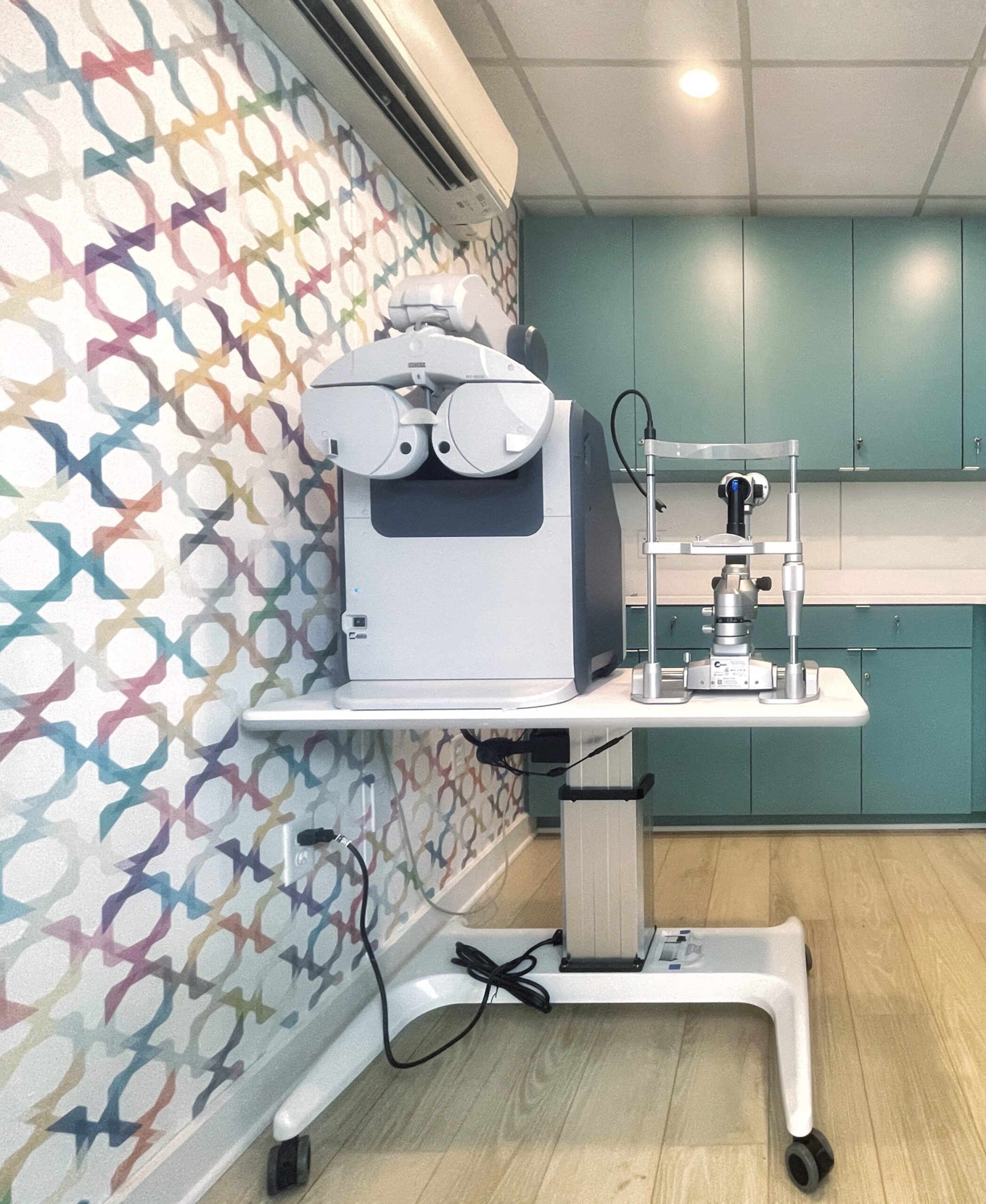What is a micro-lane?
Guest post by half Helen board member, Dr. Daniel Brinchman.
Imagine leaving your primary care clinic, visiting the grocery store, or even having your child’s eyes examined right outside their school doors in a clinic that is equipped with all the same vision assessing equipment as a traditional office. Hearing those words: “you need to have your eyes checked” can cause mixed emotions. With some of today’s vision tech, eye care can be available in even the smallest spaces.
There are different ways to evaluate vision. Traditionally vision challenges were measured by looking at letters on a wall chart while being presented with different lens options to figure out the best prescription. You may have heard the phrase, “what is the smallest line you can see?” Does this method still work? Certainly; but newer options have emerged for various reasons. Over the last 20 years especially, there has been a push in digital technologies that help improve the eye exam process. Are all the different ways of checking vision the same as the traditional eye exam?
Half Helen provides comprehensive eye exams to children and adults across Central Texas aboard our mobile “tiny house” eye clinic optical Prime.

A key element of the mission of half Helen is that mobile eye care services are delivered on-site to the communities we serve. During the planning process, it became clear that there were not only space challenges to overcome, but also compliance issues with families completing the eye exams that were needed.
How can vision exams accurately be delivered in such a small space? A traditional eye exam room needs to take place in a space 20 feet long. In order to fit multiple eye exam rooms into a tiny house, half Helen researched and adopted a modern vision care technology called the Marco 610 which fits on top of a small table.
When having your vision measured inside this instrument, your eyes and brain are optically “tricked” using parabolic mirrors into seeing far into the distance. In fact, these vision testing systems are used by the US Navy worldwide.

Our new technology in the Marco 610 allows the doctor to bring the full standard of care eye exam out of a brick and mortar office and fit it into a mobile unit.
Leveraging this micro-lane technology has allowed half Helen Foundation to bring the exams to where they are needed and increase the number of patients that they serve in, all in a very small workspace. With innovative tech like this, it is much less cumbersome to set up eye exam stations in small spaces allowing access to populations needing vision services while eliminating the travel component.
Patients undergoing a vision exam in a micro-lane should expect a very similar experience as the traditional vision exam in a clinic. The doctor presents lens choices while patients look into the instrument that simulates looking down a long hallway. There is no discomfort or special drops that need to be used, beyond those that are occasionally part of a standard eye exam.
Half Helen’s mobile unit optical prime is currently serving Austin, Texas and the surrounding areas. If you become a patient, the half Helen team looks forward to using this modern technology to help you see your very best.
